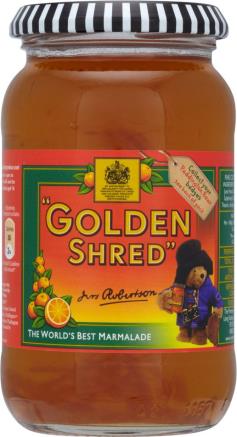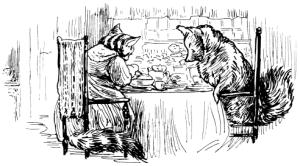

|
 Sweet semi-set fruit-and-sugar jam preserve made with citrus fruit (orange, lemon, lime, grapefruit, singly or in any combination) usually including chopped fruit peel, giving a slightly bitter flavour.  Originally Marmalade was a preserve consisting of a sweet, solid, quince jelly often with spices, rosewater, musk or ambergris, and cut into squares for eating. The word is still used for semi-solid fruit sweets in Russia. In the 17th century it occasionally meant a thick, apple-based jelly containing shredded citrus peel, or a set-jelly sweetmeat of other fruit. (Plat 1609, etc)  Original Receipt in 'The Closet Of Sir Kenelm Digby Knight, Opened ' (Digby 1669) Original Receipt in 'The Closet Of Sir Kenelm Digby Knight, Opened ' (Digby 1669)WHITE MARMULATE, THE QUEENS WAY Take a pound and an half of flesh of Quinces sliced, one pound of Sugar, and one pound of Liquor (which is a decoction made very strong of Quinces boiled in fair water). Boil these with a pretty quick fire, till they be enough, and that you find it gellieth. Then proceed as in my way. MY LADY OF BATH'S WAY Take six pounds of flesh of Quince, and two pound of Sugar moistened well with juyce of Quinces. Boil these together in a fit kettle; first gently, till the Liquor be sweated out from the quince, and have dissolved all the Sugar; Then very quick and fast, proceeding as in my way, (bruising the Quinces with a spoon, &c.;) till it be enough. This will be very fine and quick in taste; but will not keep well beyond Easter. In this course you may make Marmulate without any juyce or water (by the meer sweeting of the flesh) if you be careful, proceeding slowly till juyce enough be sweated out, least else it burn to; and then quick, that the flesh may be boiled enough, before the Moisture be evaporated away. The preferred citrus fruit is the bitter Seville orange, Citrus aurantium var. aurantium, which is higher in pectin than sweet oranges and therefore gives a good set. There does not appear to be any truth in the story that the word 'Marmalade' derives from 'Marie est malade', French for "Mary is ill", referring to Mary Queen of Scots who allegedly used it as a medicine for seasickness, nor was it invented by the Keiller family of Dundee - whatever their advertising agents like to say. Rather, although citrus preserves are found at least as far back as the 1300's, the first use of the word in English was in 1480, (OED) coming from the French 'marmelade' or the Portuguese 'marmelada', both being derived from 'melimelum', the Latin word for 'quince'. See: Quince Jam By the beginning of the 19th Century the modern form of marmalade was usual...  Original Receipt in 'The Art of Cookery Made Easy and Refined' By John Mollard (Mollard 1802) Original Receipt in 'The Art of Cookery Made Easy and Refined' By John Mollard (Mollard 1802)ORANGE MARMALADE. Take Seville oranges when in season, which is generally at the beginning of March; cut them into halves, and the halves again into thin slices, which put with the juice, but not too much of the core, and take away the pips. To every pound weight of orange add two pounds of sifted sugar and a gill of water; then put them into a preserving pan, set the pan over a quick fire, and when the mixture boils keep stirring and skimming; till it becomes of a proper stillness, which may be known by putting a little into a saucer and setting it in cold water. Then fill the pots with the marmalade, and when cold put over white paper dipped in brandy; after which cover the pots with paper and white leather, and preserve them in a dry place for use. N. B. In the same way try the proper stiffness of other jellies or jams, and cover them in like manner See: Quiddany Quince Jam  "May I pass you the marmalade?" said Duchess hurriedly." The Tale of the Pie and the Patty Pan, by Beatrix Potter Adelaide Pudding Apple Dumplings Apple Hedge-Hog Apples in Red Jelly Apricot Cream Baked Apples Beatrice Pudding Bitter Lemon Jelly Blackberry Roll Border Tart Cake Fritters Cold Pudding Derbyshire Fruit Loaf Fruited Teabread Golden Pudding Golden Syrup Grapefruit Marmalade Ground Rice Custard Hereford Apple Dumplings Lady Hornby's Souffle Lamb's Wool, or Lamasool Manchester Pudding Marmalade Marmalade Bread and Butter Pudding Marmalade Glazed Ham Marmalade Pudding Marmalade Tart Marmalade Teabread Military Pudding Miller's Marmalade Pudding Norwood Pudding Onion Marmalade Osborne Pudding Oxford Marmalade Quince Quince Jam Rhubarb Gingerbread Roly-Poly or Rolies Scott's Last Expedition Sir Watkin William Wynne's Pudding Somersetshire Puddings Stone Cream Sutton Pie Toast Treacle and Marmalade Tart Victoria Sandwich Sponge Cake Wootton Pudding  |
|
MORE FROM Foods of England... Cookbooks ● Diary ● Index ● Magic Menu ● Random ● Really English? ● Timeline ● Donate ● English Service ● Food Map of England ● Lost Foods ● Accompaniments ● Biscuits ● Breads ● Cakes and Scones ● Cheeses ● Classic Meals ● Curry Dishes ● Dairy ● Drinks ● Egg Dishes ● Fish ● Fruit ● Fruits & Vegetables ● Game & Offal ● Meat & Meat Dishes ● Pastries and Pies ● Pot Meals ● Poultry ● Preserves & Jams ● Puddings & Sweets ● Sauces and Spicery ● Sausages ● Scones ● Soups ● Sweets and Toffee ● About ... ● Bookshop ● Email: [email protected] COPYRIGHT and ALL RIGHTS RESERVED: © Glyn Hughes 2022 BUILT WITH WHIMBERRY |